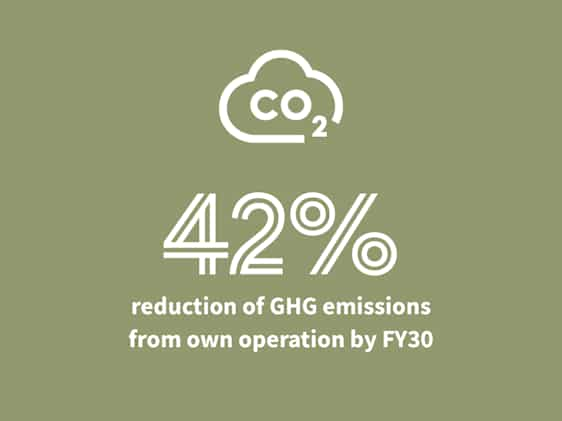Our targets are validated by Science Based Target Initiative
It’s widely accepted that limiting global warming to 1.5°C above pre-industrial levels will ensure the planet can avoid the worst effects of climate change.
This is the goal defined by the Paris Agreement, a legally binding international treaty adopted at the UN Climate Change Conference (COP21) on 12 December 2015. For the agreement to succeed, it’s essential that companies, as well as governments, play a part. As an independent organization, SBTi has developed standards, tools and guidance to help companies set emission reduction targets in line with the 1.5°C goal.
In 2024, we received approval from the Science Based Targets initiative (SBTi) of our targets for reducing our emissions. With this approval, we took an important step forward in our work to reduce the climate impact of our activities, primarily by creating greater transparency around what we commit to achieve and helping us to set the direction for the actions we need to take to get there. The targets for scopes 1 and 2 relate directly to our own business; the target for scope 3 reflects our commitment to engage our partners and suppliers in minimizing their impact, hereby reducing emissions throughout our value chain.
SBTi validated targets

Target 1
Nordic Leisure Travel Group commits to reducing scope 1 and scope 3 well-to-wake emissions from jet fuel by 19% per revenue passenger kilometre by FY2030 from a FY2023 base year.

Target 2
Nordic Leisure Travel Group commits to reducing absolute scope 2 greenhouse gas emissions by 42% by FY2030 from a FY2023 base year.

Target 3
Nordic Leisure Travel Group commits to having 50% of its travel suppliers by emissions covering use of sold products will have science-based targets by FY2029.

NLTG has committed to targets for reducing our scope 1, 2 and 3 emissions and will report in accordance with the requirements of the SBTi system from 2025 and onwards. As part of this, we will show accountability through detailed annual progress reports to SBTi.
Emissions reporting is broken down into three areas:
- Scope 1 emissions come from sources that are directly controlled or owned by the company, such as fuel combustion in vehicles and boilers, or process equipment.
- Scope 2 are emissions that the company makes indirectly, such as emissions from the use of electricity, steam, heat or cooling.
- Scope 3 emissions are all the emissions that come from activities up- and downstream in the value chain.
Read more in this case story: Accelerating emissions reductions with SBTi | NLTG.

